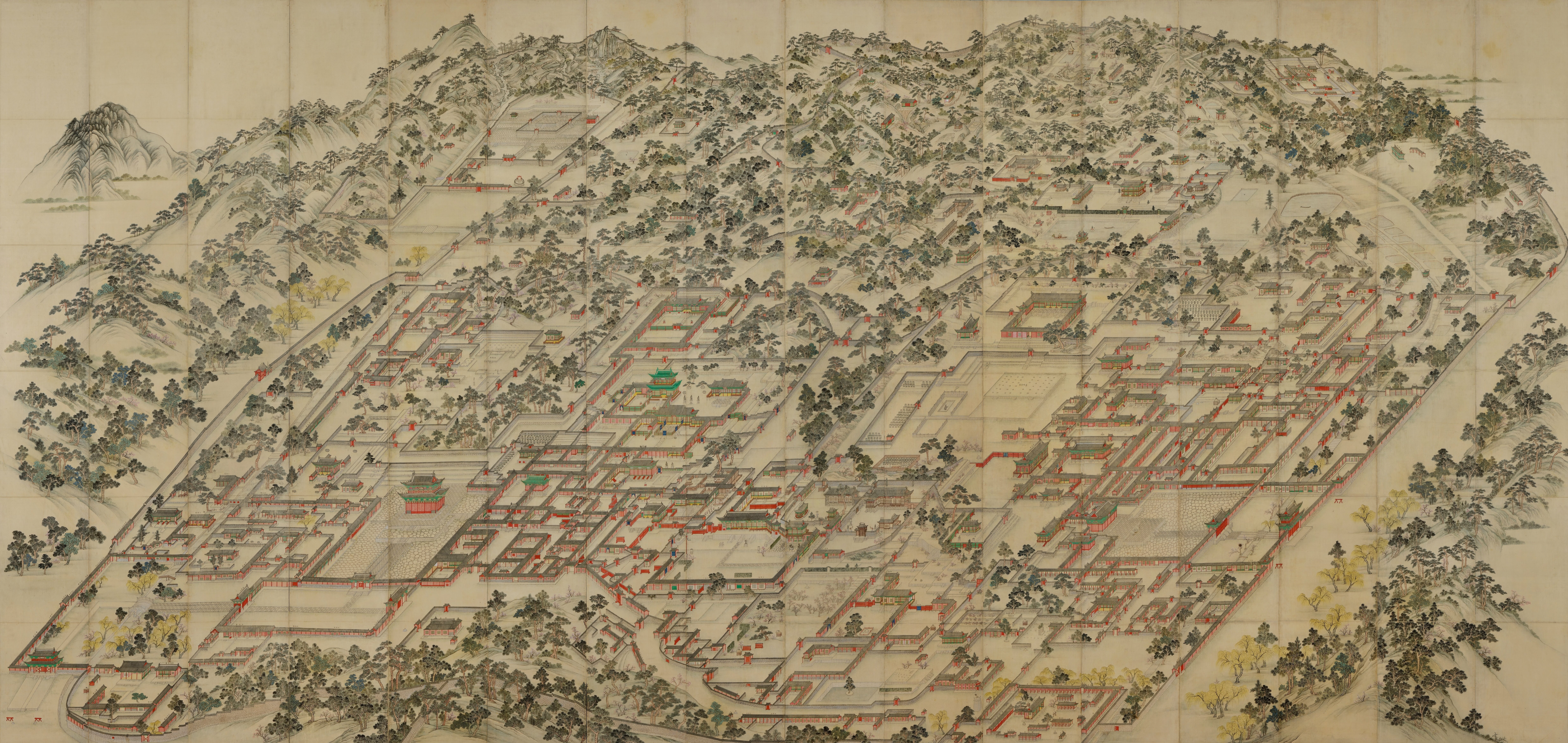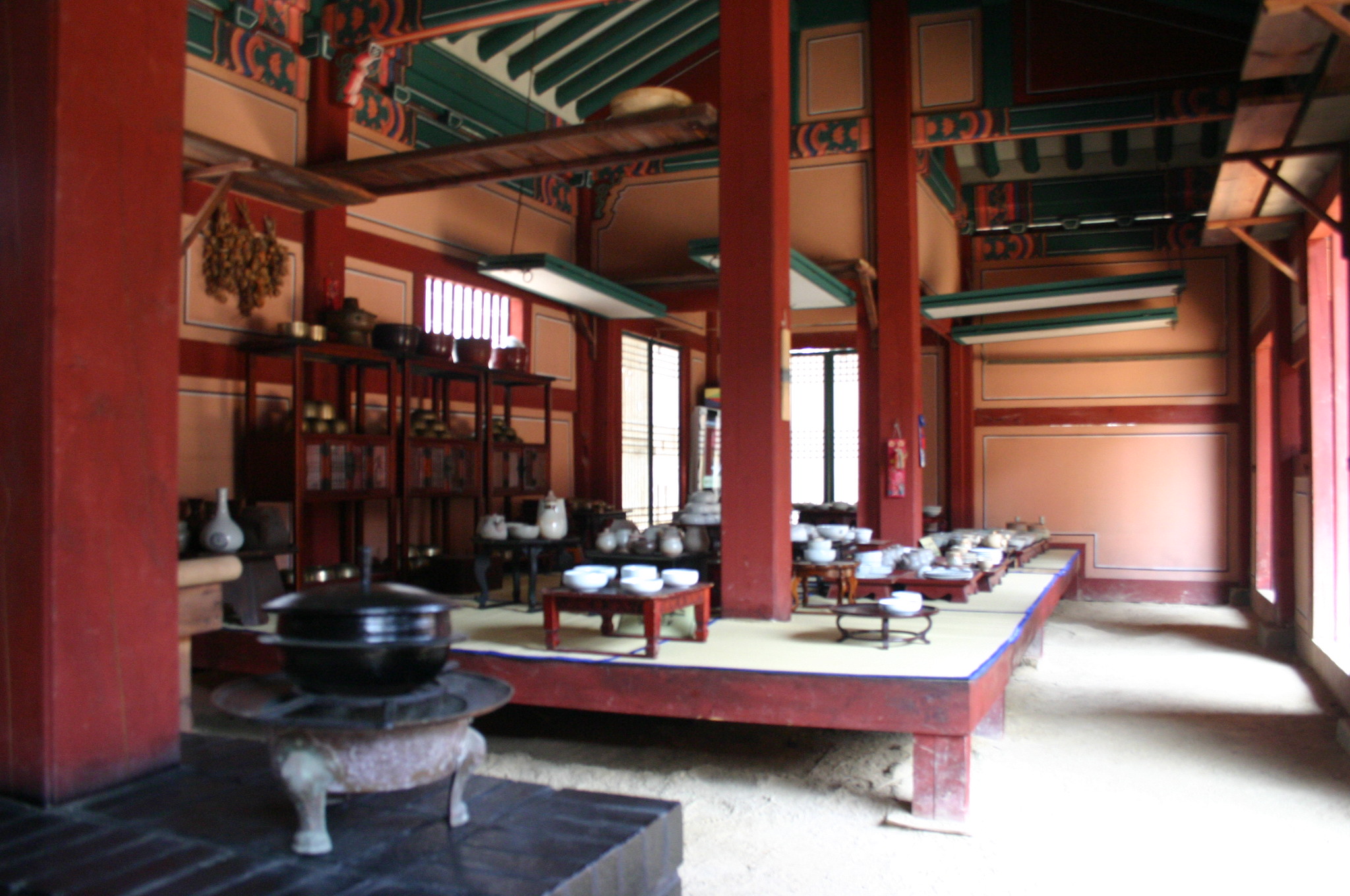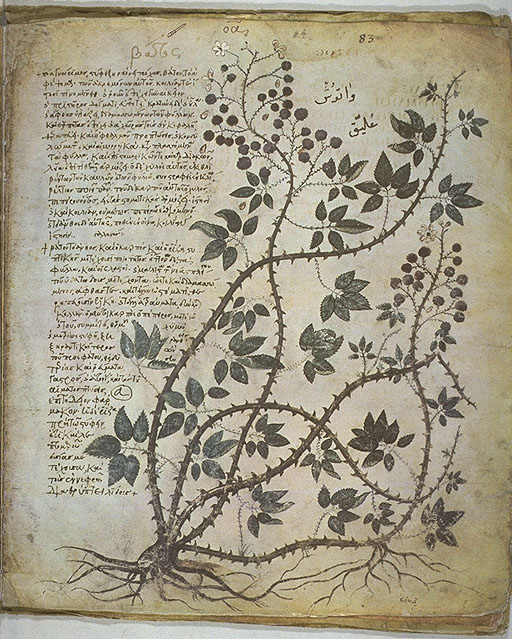|
Naeŭiwŏn
Naeŭiwŏn () was a palace pharmacy during the pre-modern Joseon period. In a literal sense, it refers to the place located at the palace for medical issues. Its other names were such as Naeguk () and Naeyakbang () which also designated the place or room for treatment. In Changdeokgung, one of Five Grand Palaces, tourists can experience how royal physicians worked long before modern Western medicine arrived in the Korean peninsula. History The first formation of Naeŭiwŏn firstly appeared at the reign of Taejong of Joseon under the title of Naeyakbang - Yak bang which means pharmacy room. Later in 1443 during Sejong's era, the title name of Naeŭiwŏn was announced, which implies that before 1443, an independent organ for medical issues did not exist. The full personnel was 16 people and each was called ''Eoui'' (), meaning a royal physician. There were also women doctors who only took care of higher-ranking women. After three decades passed, Sejo initiated government offices, whi ... [...More Info...] [...Related Items...] OR: [Wikipedia] [Google] [Baidu] |
Changdeokgung
Changdeokgung () is a former royal palace in Seoul, South Korea. A UNESCO World Heritage Site and a Historic Sites (South Korea), Historic Site of South Korea, it is among the best preserved of all Korean palaces. It and its neighboring palace Changgyeonggung have together been called the "East Palace". Changdeokgung was established in 1405. It was the second palace to be established in Seoul, after Joseon's official main palace Gyeongbokgung. Despite Gyeongbokgung's legally superior status, a majority of kings preferred to reside in Changdeokgung instead. In 1592, amidst the Imjin War, Changdeokgung and all the other palaces in the city were completely destroyed. After the war, due to budgetary constraints, Gyeongbokgung was not repaired, while Changdeokgung and Changgyeonggung were. This effectively made Changdeokgung Joseon's main palace for several centuries. In the late 19th century, under the reign of the penultimate Korean monarch Gojong of Korea, Gojong, Gyeongbokgung was ... [...More Info...] [...Related Items...] OR: [Wikipedia] [Google] [Baidu] |
Heo Jun
Heo Jun (; 1539 – October 9, 1615) was a Korean physician who served as the royal chief physician of the Naeuiwon during the reigns of King Sejong (1597–1608) and King Gwanghaegun (1608–1623) of the Korea dynasty. Biography Childhood and youth In 1539, Heo Jun was born in the Gangseo District of Seoul into an affluent military family. Although he belonged to the Yangcheon Heo clan—a wealthy and respected household at that time—he faced discrimination from Yangban, the traditional ruling class, because his mother was a concubine. As a result, he could not attain Yangban status. Social status and hierarchical position were significant factors in the then-Confucian society of Korea, influencing quality of life, education, and recognition. During the Joseon period, illegitimate children of aristocrats were classified as chungins and could not inherit their father's Yangban status. Jungin, or "middle people," were a social class of technicians and administrators, ... [...More Info...] [...Related Items...] OR: [Wikipedia] [Google] [Baidu] |
Joseon
Joseon ( ; ; also romanized as ''Chosun''), officially Great Joseon (), was a dynastic kingdom of Korea that existed for 505 years. It was founded by Taejo of Joseon in July 1392 and replaced by the Korean Empire in October 1897. The kingdom was founded following the aftermath of the overthrow of Goryeo in what is today the city of Kaesong. Early on, Korea was retitled and the capital was relocated to modern-day Seoul. The kingdom's northernmost borders were expanded to the natural boundaries at the rivers of Yalu River, Amnok and Tumen River, Tuman through the subjugation of the Jurchen people, Jurchens. During its 500-year duration, Joseon encouraged the entrenchment of Korean Confucianism, Confucian ideals and doctrines in Korean society. Neo-Confucianism was installed as the new state's ideology. Korean Buddhism, Buddhism was accordingly discouraged, and occasionally Buddhists faced persecution. Joseon consolidated its effective rule over the Korean peninsula and saw the he ... [...More Info...] [...Related Items...] OR: [Wikipedia] [Google] [Baidu] |
Five Grand Palaces
Seoul, officially Seoul Special Metropolitan City, is the capital and largest city of South Korea. The broader Seoul Metropolitan Area, encompassing Seoul, Gyeonggi Province and Incheon, emerged as the world's sixth largest metropolitan economy in 2022, trailing behind New York, Tokyo, Los Angeles, Paris, and London, and hosts more than half of South Korea's population. Although Seoul's population peaked at over 10 million, it has gradually decreased since 2014, standing at about 9.6 million residents as of 2024. Seoul is the seat of the South Korean government. Seoul's history traces back to 18 BC when it was founded by the people of Baekje, one of the Three Kingdoms of Korea. During the Joseon dynasty, Seoul was officially designated as the capital, surrounded by the Fortress Wall of Seoul. In the early 20th century, Seoul was occupied by the Empire of Japan, temporarily renamed "Keijō" ("Gyeongseong" in Korean). The Korean War brought fierce battles, with Seoul changing ... [...More Info...] [...Related Items...] OR: [Wikipedia] [Google] [Baidu] |
Korean Peninsula
Korea is a peninsular region in East Asia consisting of the Korean Peninsula, Jeju Island, and smaller islands. Since the end of World War II in 1945, it has been politically divided at or near the 38th parallel between North Korea (Democratic People's Republic of Korea; DPRK) and South Korea (Republic of Korea; ROK). Both countries proclaimed independence in 1948, and the two countries fought the Korean War from 1950 to 1953. The region is bordered by China to the north and Russia to the northeast, across the Amnok (Yalu) and Duman (Tumen) rivers, and is separated from Japan to the southeast by the Korea Strait. Known human habitation of the Korean peninsula dates to 40,000 BC. The kingdom of Gojoseon, which according to tradition was founded in 2333 BC, fell to the Han dynasty in 108 BC. It was followed by the Three Kingdoms period, in which Korea was divided into Goguryeo, Baekje, and Silla. In 668 AD, Silla conquered Baekje and Goguryeo with the aid of the Tang dy ... [...More Info...] [...Related Items...] OR: [Wikipedia] [Google] [Baidu] |
Taejong Of Joseon
Taejong (; 16 May 1367 – 10 May 1422), personal name Yi Pangwŏn (), was the third monarch of the Joseon dynasty of Korea and the father of Sejong the Great. He was the fifth son of King Taejo, the founder of the dynasty. Before ascending to the throne, he was known as Grand Prince Jeongan (). Biography Early life and founding of Joseon Born in 1367 as the fifth son of Yi Sŏnggye and his first wife Lady Han, Yi Pangwŏn qualified as an official in 1382. He studied under Confucian scholars such as Wŏn Ch'ŏnsŏk. During his early years, he assisted his father in gathering the support of the commoners and of many influential figures in the government; Yi Pangwŏn also helped in the founding of Joseon by assassinating powerful officials who remained loyal to Goryeo, most prominently Chŏng Mong-ju. Strifes of Princes After contributing heavily to the overthrowing of the previous dynasty and the establishment of Joseon, he expected to be appointed as successor to ... [...More Info...] [...Related Items...] OR: [Wikipedia] [Google] [Baidu] |
Sejong
Sejong (; 15 May 1397 – 8 April 1450), commonly known as Sejong the Great (), was the fourth monarch of the Joseon dynasty of Korea. He is regarded as the greatest ruler in Korean history, and is remembered as the inventor of Hangul, the native alphabet of the Korean language. Initially titled Grand Prince Chungnyeong (), he was the third son of King Taejong and Queen Wongyeong. In 1418, Sejong replaced his eldest brother, Yi Che, as crown prince; a few months later, Taejong voluntarily abdicated the throne in Sejong's favor. In the early years of Sejong's reign, King Emeritus Taejong retained vast powers, most notably absolute executive and military power, and continued to govern until his death in 1422. Sejong reinforced Korean Confucian and neo-Confucian policies, and enacted major legal amendments (). He personally created and promulgated the Korean alphabet, encouraged advancements in science and technology, and introduced measures to stimulate economic growth. H ... [...More Info...] [...Related Items...] OR: [Wikipedia] [Google] [Baidu] |
Korean Medicine
Traditional Korean medicine (known in North Korea as Koryo medicine) refers to the forms of traditional medicine practiced in Korea. History Korean medical traditions originated in ancient and prehistoric times and can be traced back as far as 3000 Common Era, BCE when stone and bone needles were found in North Hamgyong Province, in present-day North Korea. In Gojoseon, where the founding myth of Korea is recorded, there is a story of a tiger and a bear who wanted to reincarnate in human form and who ate Artemisia (genus), wormwood and garlic. In ''Jewang Ungi'' (제왕운기), which was written around the time of ''Samguk Yusa'', wormwood and garlic are described as 'edible medicine', showing that, even in times when incantatory medicine was the mainstream, medicinal herbs were given as curatives in Korea. Medicinal herbs at this time were used as remedial treatment such as easing the pain or tending injury, along with knowing what foods were good for health. In the period of t ... [...More Info...] [...Related Items...] OR: [Wikipedia] [Google] [Baidu] |
Korean Royal Court Cuisine
Korean royal court cuisine was the style of cookery within Korean cuisine traditionally consumed at the court of the Joseon Dynasty, which ruled Korea from 1392 to 1897. There has been a revival of this cookery style in the 21st century. It is said that twelve dishes should be served along with rice and soup, with most dishes served in '' bangjja'' ( bronzeware). History Collectively known as ''gungjung eumsik'' during the pre-modern era, the foods of the royal palace reflected the opulent nature of the past rulers of the Korean peninsula. The opulent nature of the royalty is evidenced in examples as far back as the Silla kingdom, where a man-made lake ( Anapji Lake, located in Gyeongju) was created with multiple pavilions and halls for the sole purpose of opulent banquets and a spring-fed channel, Poseokjeong, was created for the singular purpose of setting wine cups afloat during the writing of poems. Reflecting the regionalism of the kingdoms and bordering countries of the p ... [...More Info...] [...Related Items...] OR: [Wikipedia] [Google] [Baidu] |
Materia Medica
''Materia medica'' ( lit.: 'medical material/substance') is a Latin term from the history of pharmacy for the body of collected knowledge about the therapeutic properties of any substance used for healing (i.e., medications). The term derives from the title of a work by the Ancient Greek physician Pedanius Dioscorides in the 1st century AD, , 'On medical material' (Περὶ ὕλης ἰατρικῆς, ''Peri hylēs iatrikēs'', in Greek). The term ''materia medica'' was used from the period of the Roman Empire until the 20th century, but has now been generally replaced in medical education contexts by the term pharmacology. The term survives in the title of the ''British Medical Journal''s "Materia Non Medica" column. Ancient civilizations Ancient Egypt The earliest known writing about medicine was a 110-page Egyptian papyrus. It was supposedly written by the god Thoth in about 16 BC. The Ebers papyrus is an ancient recipe book dated to approximately 1552 BC. It contains a ... [...More Info...] [...Related Items...] OR: [Wikipedia] [Google] [Baidu] |
Dongui Bogam
The ''Dongui Bogam'' (; translated as "Principles and Practice of Eastern Medicine") is a Korean book compiled by the royal physician, Heo Jun and was first published in 1613 during the Joseon period of Korea. The book is regarded as important in traditional Korean medicine, and is one of the classics of Oriental medicine today. In July 2009, it was added to UNESCO’s Memory of the World International Register. The original edition of Dongui Bogam is currently preserved by the Korean National Library.Dongui Bogam at The original was written in and only part of it was tra ... [...More Info...] [...Related Items...] OR: [Wikipedia] [Google] [Baidu] |
Government Agencies Of Joseon
A government is the system or group of people governing an organized community, generally a state. In the case of its broad associative definition, government normally consists of legislature, executive, and judiciary. Government is a means by which organizational policies are enforced, as well as a mechanism for determining policy. In many countries, the government has a kind of constitution, a statement of its governing principles and philosophy. While all types of organizations have governance, the term ''government'' is often used more specifically to refer to the approximately 200 independent national governments and subsidiary organizations. The main types of modern political systems recognized are democracies, totalitarian regimes, and, sitting between these two, authoritarian regimes with a variety of hybrid regimes. Modern classification systems also include monarchies as a standalone entity or as a hybrid system of the main three. Historically prevalent forms ... [...More Info...] [...Related Items...] OR: [Wikipedia] [Google] [Baidu] |







